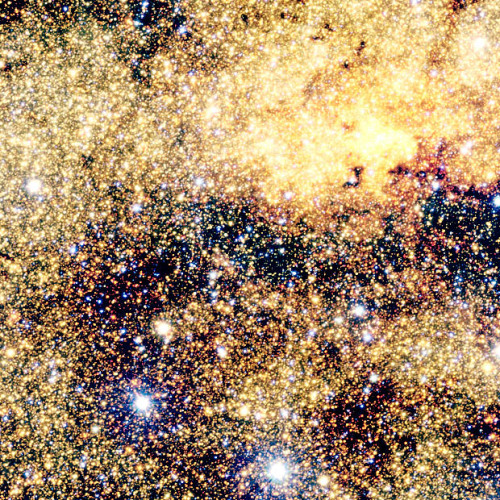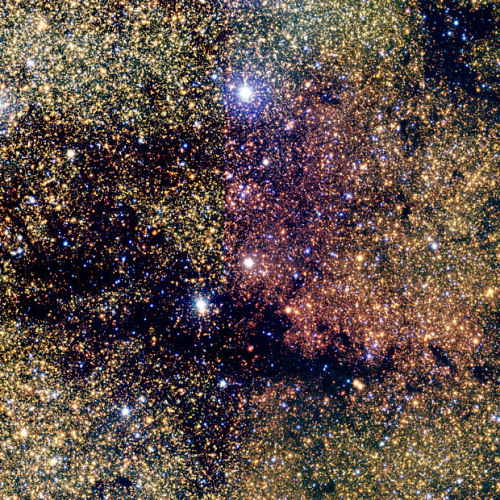United Arab Emirates’ Plan For A Mars City
United Arab Emirates’ Plan for a Mars City
It seems that everyone is really starting to get into the race to Mars! The project, dubbed “Mars 2117”, envisions a completely functioning human community on the surface of the red plane by year 2117.
According to the Emirates Mars Mission main website, Mars 2117 is a specific goal that the UAE hopes will encourage international cooperation in space exploration and scientific discovery. This ambitious project also falls under a larger umbrella of aerospace goals that the UAE has set out since 2014 when they first showed interest in entering the space industry. Some of these goals include sending an unmanned probe to Mars by 2021, studying Earth’s atmosphere using advanced technology, and collaborating with scientists worldwide.
The Mars 2117 project is an incredible vision, one that I am excited to see grow and gain more attention in the years to come. While there are many initiatives around the world that aim at reaching the famous red planet, this is the first time that an entire nation has so publicly announced support and planning for such an enormous long-term project, and looks to be moving with forward momentum.
I can only wonder what other nations and organizations are thinking about this concept, as well as marvel at how much attention the space industry has garnered recently. It seems as if there are new technical discoveries and achievements being made everyday, and it doesn’t look like the space race is stopping. With SpaceX and NASA already testing advanced aero-spacecraft for future launches, and the Dutch Mars One Mission currently under progress, Mars 2117 certainly adds more fuel to the fire.
A century is certainly a long time and anything can happen between 2017 and 2117, but I can’t wait to see what happens until then.
More Posts from Catchconstellations-blog and Others
Really interesting to see a space-centric blog that isn't just pretty pictures of stars without any context. Your analyses and explanations of ongoing news aren't bad at all, so keep up the good work.
Thank you so much! I do my best to make sure my entries have good content, so I’m happy to know that you’re enjoying them!
No pessimist ever discovered the secret of the stars, or sailed to an uncharted land, or opened a new doorway for the human Spirit.
Helen Keller

(via the-wolf-and-moon)
Catch Constellations
Hello everyone! My name is Dianne and this is my blog on everything space related! While I am currently writing more about news updates and what’s currently going on in the space world than anything else, I hope to branch out - catch other constellations, so to speak - and contribute more content such as quotes, commentaries, videos, explanations of scientific concepts, and more.
I created this blog not only because I wanted to share my love for space with anyone who happens to find this little corner of the internet, but also because I wanted to do it in a way that isn’t too techno-jargon-filled or confusing. As a STEM major, I know how confusing trying to understand complicated scientific concepts can be, and that’s why I’ll do my best to make sure everyone and anyone can enjoy my posts!

A little bit about me:
- I’m currently a sophomore at the University of Central Florida, studying biotechnology and planning to enter the astrobiology/sustainable energy fields one day.
- I love space, which may seem obvious given this blog, but it is sincerely one of my life goals to become an astronaut and go beyond Earth. It has been ever since I was a little girl. There is so much out there that we don’t know, that we can explore, that we can learn from!
- When I’m not studying or planning to take over NASA, you can find me writing and journaling, buried in a book, singing my lungs out to Disney songs or Broadway soundtracks, or generally doing a bunch of nerdy stuff.
- Rapid fire personality points! INFJ + Hufflepuff + Virgo
Alright! This will be it for my first blog post. I’ll be back soon with updates on some really cool space news. Until then, ad astra!

A 2015 documentary on the history of space, the current progress of space exploration, and where we might go in the future.
If you have around an hour to spare, and a space itch to scratch, this is an awesome documentary to watch! It has very good scientific support, fantastic HD visuals, and exciting narration. It really opens your eyes to how much we’ve discovered only recently, and also how much we still don’t know. Great documentary!
Solar System: Things to Know This Week
Earth is the ultimate ocean planet (that we know of), but it turns out that our solar system has water in some surprising places, with five ocean-bearing moons and potentially several more worlds with their own oceans.

1. The Original “Alien Ocean”
Our Galileo spacecraft (1989-2003) detected the first evidence of an ocean beyond Earth under the ice of Jupiter’s icy moon Europa.

2. Lost Oceans
There are signs that Mars and Venus once had oceans, but something catastrophic may have wiped them out. Earth’s natural force field – our magnetosphere – acts like shield against the erosive force of the solar wind.

3. Earth, the Original Ocean World
The search for life beyond Earth relies, in large part, on understanding our home planet. Among the newest Earth ocean explorers us the Cyclone Global Navigation Satellite System, or CYGNSS–a constellation of microsatellites that will make detailed measurements of wind speeds over Earth’s oceans to help understand hurricanes. The spacecraft have moved into their science operations phase.

4. Sister Ships
It’s fitting the first mission to explore an alien ocean is named in honor of fast-sailing clipper ships of old. Our Europa Clipper spacecraft will seek signs of habitability on Jupiter’s moon Europa.

5. Game Changer
Scientists expected Saturn’s moon Enceladus to be a tiny, solid chunk of ice and rock. But, not long after arriving at Saturn, our Cassini spacecraft made a series of incremental discoveries, eventually confirming that a global subsurface ocean is venting into space, with signs of hydrothermal activity.

6. Why Ocean Worlds Matter
“The question of whether or not life exists beyond Earth, the question of whether or not biology works beyond our home planet, is one of humanity’s oldest and yet unanswered questions. And for the first time in the history of humanity, we have the tools and technology and capability to potentially answer this question. And, we know where to go to find it. Jupiter’s ocean world Europa.” - Kevin Hand, NASA Astrobiologist

7. More Alien Oceans
Scientists think Jupiter’s giant moons Ganymede and Callisto also hide oceans beneath their surfaces. Elsewhere in the solar system, scientists hope to look for hidden oceans on far-flung worlds from Ceres in the main asteroid belt to Pluto in the Kuiper Belt.

8. Cold Faithful(s)?
Thanks to our Cassini orbiter we know the tiny moon Enceladus is venting its ocean into space in a towering, beautiful plume. The Hubble Space Telescope also has seen tantalizing hints of plumes on Jupiter’s moon Europa. Plumes are useful because they provide samples of ocean chemistry for oceans that could be miles below the surface and difficult for spacecraft to reach. It’s like they’re giving out free samples!

9. Titanic Seas and Ocean
Saturn’s moon Titan not only has liquid hydrocarbon seas on its surface. It also shows signs of a global, subsurface saltwater ocean–making the giant moon a place to possibly look for life as we know it and life as we don’t know it … yet.

10. Oceans Beyond
Several of the thousands of planets discovered beyond our solar system orbit their stars in zones where liquid surface water is possible–including Proxima-b, a rocky planet orbiting the star nearest to our own.
BONUS: Adopt a bit of YOUR Ocean World
We invite everyone to help us celebrate Earth Day 2017 by virtually adopting a piece of Earth as seen from space. Your personalized adoption certificate will feature data from our Earth-observing satellites for a randomly assigned location, much of it ocean (it is 70 percent of the Earth’s surface after all!). Print it and share it, then explore other locations with our interactive map and get even more Earth science data from NASA’s Worldview website.
Visit go.nasa.gov/adopt to adopt your piece of the planet today!
Discover more lists of 10 things to know about our solar system HERE.
Make sure to follow us on Tumblr for your regular dose of space: http://nasa.tumblr.com


Milky Way Shows 84 Million Stars in 9 Billion Pixels
Side Note: The two images shown above are mere crop outs from ESA’s recent hit: The 9 Billion Pixel Image of 84 Million Stars. These two focus on the bright center of the image for the purpose of highlighting what a peak at 84,000,000 stars looks like.
Astronomers at the European Southern Observatory’s Paranal Observatory in Chile have released a breathtaking new photograph showing the central area of our Milky Way galaxy. The photograph shows a whopping 84 million stars in an image measuring 108500×81500, which contains nearly 9 billion pixels.
It’s actually a composite of thousands of individual photographs shot with the observatory’s VISTA survey telescope, the same camera that captured the amazing 55-hour exposure. Three different infrared filters were used to capture the different details present in the final image.
The VISTA’s camera is sensitive to infrared light, which allows its vision to pierce through much of the space dust that blocks the view of ordinary optical telescope/camera systems.
source
Let me start off by saying that I think Crash Course is a great resource for people who want to get the basic details of any subject the creators offer. CC’s series for astronomy is particularly wonderful. The science behind astronomy and space can be mind-boggling due to the complexities of physics, mathematics, photonics, and other relevant subjects; CC makes it easy and fun to learn about astronomy without being too technical or in-depth. Great series of videos if you have time to check them out!

The beautiful Milky Way taken in one of the most darkest skies in the world over Boa Vista in the Cape Verde Islands. photo by James Atkinson
js
Hey Dianne. I love love love this theme! It is sooo cool. I have no idea how you did it (was it witchcraft?!?!). I love that you have this calming music playing as well. everything is just awesome --Jennifer Holden
Hi Jennifer, thank you so much for visiting my blog! The theme took forever to edit and format, but I think it’s totally worth it :D
CONSTELLATION: (noun) Group of stars that form a recognizable pattern to which a mythological or earth-based name is assigned Pattern of stars whose name or is associated with different stories and meanings Story told by stars connected across the infinite night sky, overlapping with countless other stories that have unfolded from ancient supernovas, whose imaginary lines urge our eyes up from the chaos of the world around us to the unknown vastness in which we are but a speck of dust -------- Hi! I’m a starry-eyed astrogeek named Dianne who loves absolutely everything that has to do with the stars and outer space. When I’m not studying or preparing to take over NASA one day, you can find me trying to stargaze despite city lights or happily planning my next road trip.
35 posts

